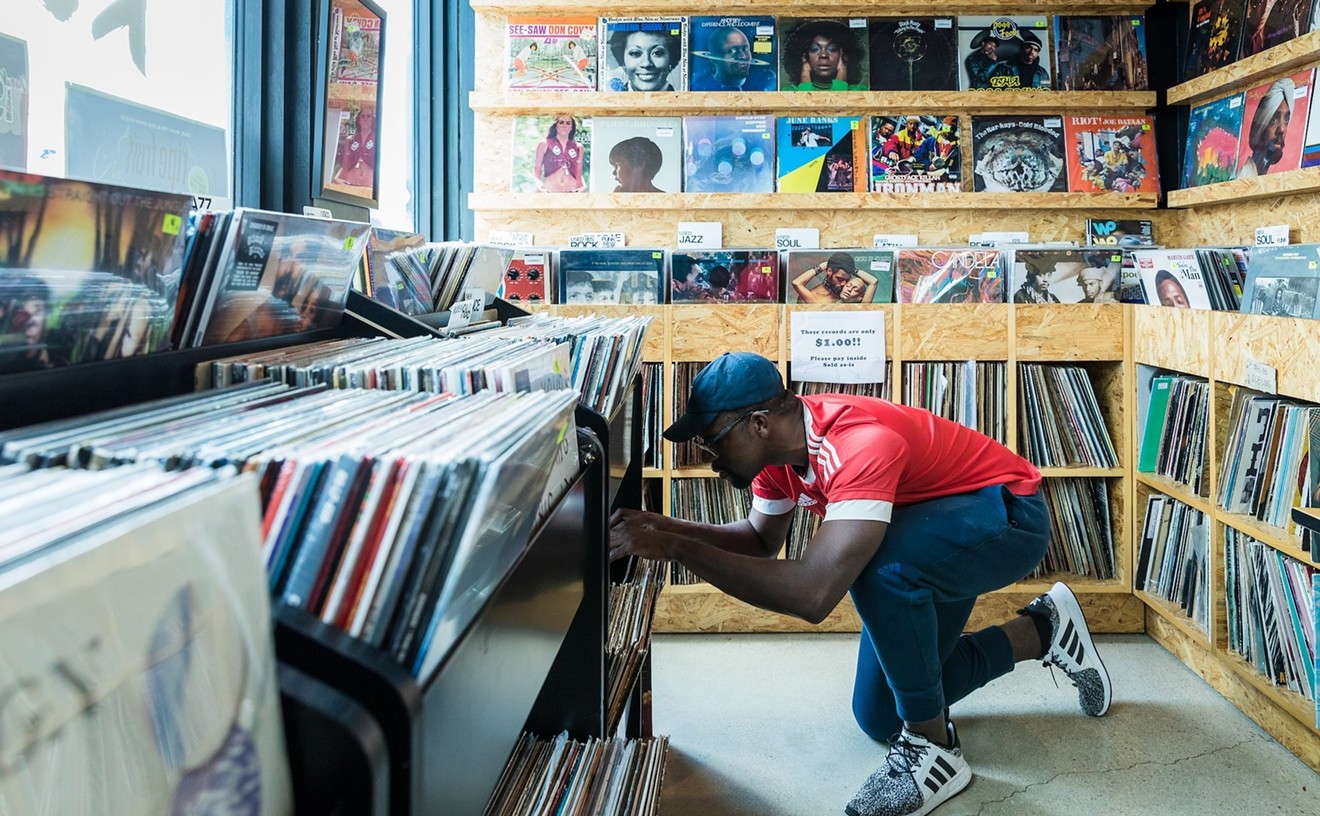This week's New Times cover story looks at why coral reefs halfway around the world are being decimated for Florida's curio trade. Here's a behind-the-scenes look at one group that's working to reverse the trend.
Ken Nedimyer looked up from his omelet and asked if I get seasick. "Never," I answered with a contrived sense of confidence. As soon the word rolled off my tongue, I realized that my experience on the high seas consisted of a few fishing trips on the Long Island Sound and countless hours spent watching Deadliest Catch.
I was desperate to tag along with Nedimyer and catch a glimpse of one of his famed coral nurseries. Later that day, Nedimyer, who runs the nonprofit Coral Restoration Foundation, was taking a dozen undergrads from Rutgers University's marine biology club to a one-of-a-kind site 30 minutes off Key Largo's coast.
We left the dock around noon, and the students seemed less than impressed that some jerk journalist was crashing their spring break scuba adventure and hitching a free ride on a dive boat they had chartered. About 15 minutes into the journey, the first bead of nauseous sweat plopped from my forehead. "Just keep asking questions," the voice inside my head said. "Scribble notes, talk to everyone, ignore the waves and you'll be fine."
That's what I tried to do. But the farther we went, the whiter and sweatier I got. It was a windy and hot March day. There were waves, but nothing that seemed extreme by any measure. My stomach was filled with about 40 ounces of black coffee, two pieces of toast, and two scrambled eggs. It didn't help that I was running on eight hours of sleep spread over two days.
I ducked into the bathroom, pulled the shower curtain of a door closed, and tried to be as silent as possible while expelling a mouthful of the darkest, most acidic vomit ever concocted by my stomach. "You're fine," the voice inside said. "No one knows your sick. They just think your taking a piss."
By the time we arrived at the nursery, my ghost-white face, vomit-smelling breath, and sweat-drenched shirt made it apparent to everyone that I was not the seafaring rebel writer I pitched myself as over breakfast.
The captain tossed me a snorkel, a pair of fins and a mask and suggested that getting in the water would help settle my stomach. I agreed this was a good idea while downplaying the fact that I had never used a snorkel and wasn't what one might call a "strong swimmer."
Peering down on the coral nursery was mind-blowing at first. For weeks, I had been intensely focused on the destruction of the world's reefs and trying to figure out why people are importing 40-foot containers filled with dead coral from the South Pacific. But here was a haven of living, growing coral; an aquatic incubator that could serve as a model for replenishing reefs around the world.
Below me, Nedimyer and the scuba-equipped Rutgers students maneuvered through the farm, checking on slivers of staghorn coral that will eventually be transplanted back onto the Florida Reef Tract. A school of silver fish darted under me while a lone, vibrant-blue reef fish circled aimlessly.
Then a large swell slapped me in the face and forced a few ounces of saltwater down my gullet. Then it happened again and again and again.
I crawled back on the boat only to have a steady stream of vomit pour from my mouth into the ocean for the next 20 to 30 minutes. I discovered that the only way I wouldn't throw up is if I sat hunched over with my eyes closed and my head pointing toward the shore. That was fine, except I wasn't wearing a shirt or any sun block. I could feel my pastey Irish-American skin charring, and didn't care. At least I wasn't puking.
With everything wrenched from gut, and my back sufficiently burnt, I stumbled over to the shade and managed to doze off for a bit.
The heat, along with the mouthfuls of saltwater and lack of sleep, sent me down a pit of mild hallucinatory despair where visions of undulating highways had me convinced that I would be stranded on the Keys.
It was only 2 p.m.; there were still fours hours left of this watery woe. I nursed a piece of ginger gum given to me by a crew member for as long as possible and made lousy attempts at small talk with some of the students who now seemed genuinely sympathetic.
The day dragged on, and the waves never relented.
During a quick pit stop to change his tank, Nedimyer looked over with a wild smile, an expression that simultaneously conveyed sympathy and delight. "Life on the boat is hell," he said. Before I could piece together a sensible response, he was back under the water doing whatever it is he does to save Florida's reefs.
New Times on Facebook | The Pulp on Facebook | Chris Sweeney on Facebook | Twitter | E-mail Chris Sweeney |










